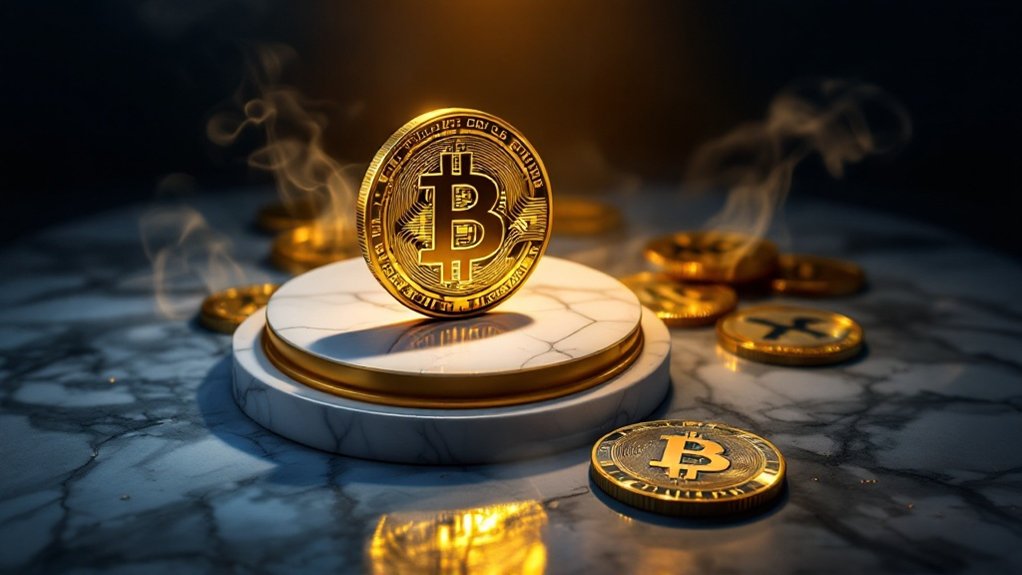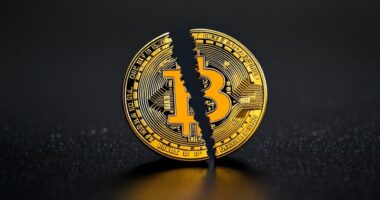Peter Brandt has sharply criticized the inclusion of altcoins like XRP and Solana in the U.S. crypto reserve policy, calling it a “huge defeat” for Donald Trump’s credibility. Brandt insists that Bitcoin should be the exclusive reserve asset, regarding altcoins as struggling for relevance. The recent policy change, which expanded Trump’s original Bitcoin-only approach, has sparked mixed reactions in the crypto community. Explore more to understand the implications this decision may have on the future of cryptocurrency.

In a surprising twist that could rival a plot from a political thriller, veteran trader Peter Brandt has taken a firm stance against the inclusion of altcoins like XRP and Solana in the U.S. crypto reserve policy. Brandt did not mince words, labeling this move a “huge defeat” for Donald Trump’s credibility. He shared his discontent, stating that his faith in Trump’s judgment diminished by 30%. For Brandt, Bitcoin should reign supreme as the sole reserve asset, leaving altcoins scrambling for relevance.
The crypto landscape shifted dramatically when Trump’s plan, initially focused on Bitcoin, suddenly expanded to include a variety of altcoins like Ethereum, Cardano, XRP, and Solana on March 2, 2025. This change was marketed as a leap toward financial innovation, aiming to act as a hedge against inflation. However, the details remained as murky as a foggy morning, leaving many in the crypto community scratching their heads.
The U.S. crypto reserves faced immediate scrutiny from industry experts questioning the long-term stability of including volatile altcoins.
Reactions within the community were mixed. Bitcoin maximalists raised alarms about the risks and volatility that accompany a broader selection of assets. Questions about favoritism in the selection process and potential market manipulation bubbled to the surface. Notable figures chimed in, with Peter Schiff questioning the necessity of a U.S. XRP reserve while others like Brian Armstrong pushed for a Bitcoin-only approach.
Meanwhile, Michael Saylor celebrated the move as a win for the crypto industry, and Brad Garlinghouse described it as a turning point for XRP.
Initially, the market buzzed with excitement, sparking price surges for the included coins. Cardano saw a staggering 60% increase, XRP jumped 33%, and Solana climbed 22%. However, these gains proved fleeting, quickly deflated by profit-taking and shifting market sentiment.
Brandt, a seasoned trader, emphasizes capital preservation, cautioning against the allure of high-volatility trading and advising that holding assets with significant losses against Bitcoin might not be the wisest move.
In the end, trading is a marathon, not a sprint, and Brandt’s perspective serves as a reminder to tread carefully in this unpredictable landscape.
Frequently Asked Questions
What Is Peter Brandt’s Background in Cryptocurrency Trading?
Peter Brandt, a veteran trader since 1976, shifted into cryptocurrency analysis in recent years. A self-proclaimed Bitcoin maximalist, he’s skeptical of altcoins, often sharing critical insights on platforms like Twitter.
With over four decades of trading experience, he employs classical chart patterns and emphasizes risk management. Brandt has made notable predictions, including Bitcoin’s price trajectory, while maintaining a healthy skepticism towards cryptocurrencies like Ethereum and XRP.
How Does the US Crypto Reserve Policy Impact Investors?
The U.S. crypto reserve policy greatly impacts investors by altering market dynamics.
When cryptocurrencies are included, they often see heightened trading volumes and liquidity, like a party that suddenly gets more guests.
However, if assets are removed, prices can drop faster than a lead balloon.
Investors are shifting strategies, focusing on long-term holds and diversifying portfolios, while keeping a keen eye on government policies—because in crypto, knowledge is power, and sometimes a lifesaver!
What Are the Main Criticisms of XRP and SOL?
XRP and SOL face serious critiques primarily centered around centralization, regulatory risks, and market manipulation.
XRP is often viewed as a “pet rock” of crypto, with Ripple controlling over half its supply, while SOL suffers from a centralized validator structure that leads to outages.
Both coins are also prone to regulatory scrutiny, making them feel like the kid in class who can’t sit still.
Finally, large holders can manipulate prices, creating a wild rollercoaster for investors.
Are There Alternative Cryptocurrencies That Brandt Supports?
Peter Brandt supports several alternative cryptocurrencies, particularly Bitcoin (BTC) and Ethereum (ETH). He views Bitcoin as digital gold, predicting it could soar over $100,000.
Ethereum, the smart contract leader, is expected to thrive in the next bull market, potentially hitting $5,000-$10,000.
Additionally, he appreciates Litecoin (LTC) for its longevity, likening it to silver alongside Bitcoin’s gold.
Chainlink (LINK) is another favorite, praised for its oracle technology and enterprise potential.
What Implications Does Brandt’s Opinion Have on Market Trends?
Brandt’s opinion could considerably shape market trends. His critique might drive investors away from certain cryptocurrencies, causing short-term price dips like a roller coaster ride—thrilling but shaky.
This scrutiny encourages a deeper look at altcoins’ fundamentals, pushing investors to prioritize Bitcoin as a safer bet. As more focus shifts, it could lead to clearer regulations and strengthen Bitcoin’s position, while altcoins may face a tougher crowd in the investment arena.









